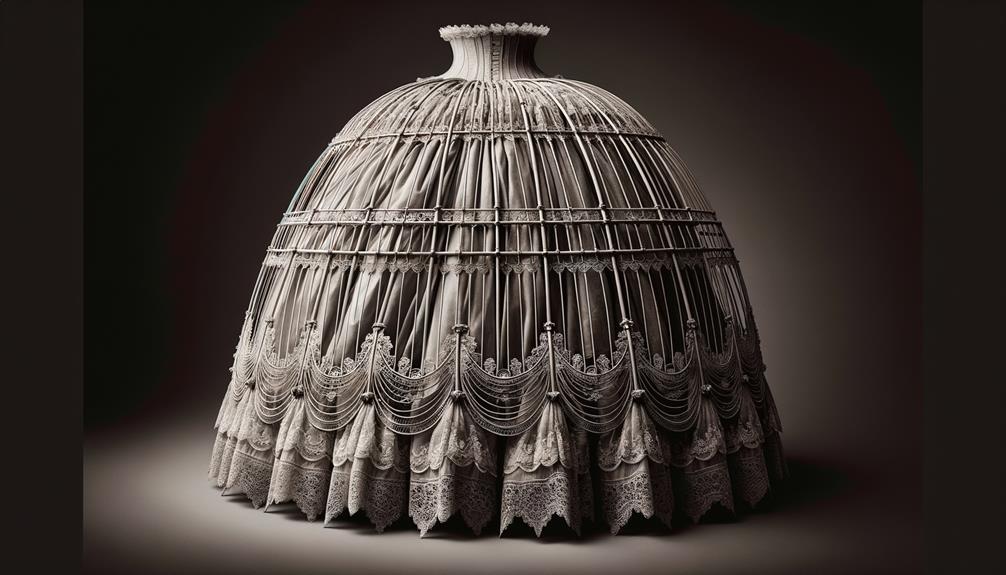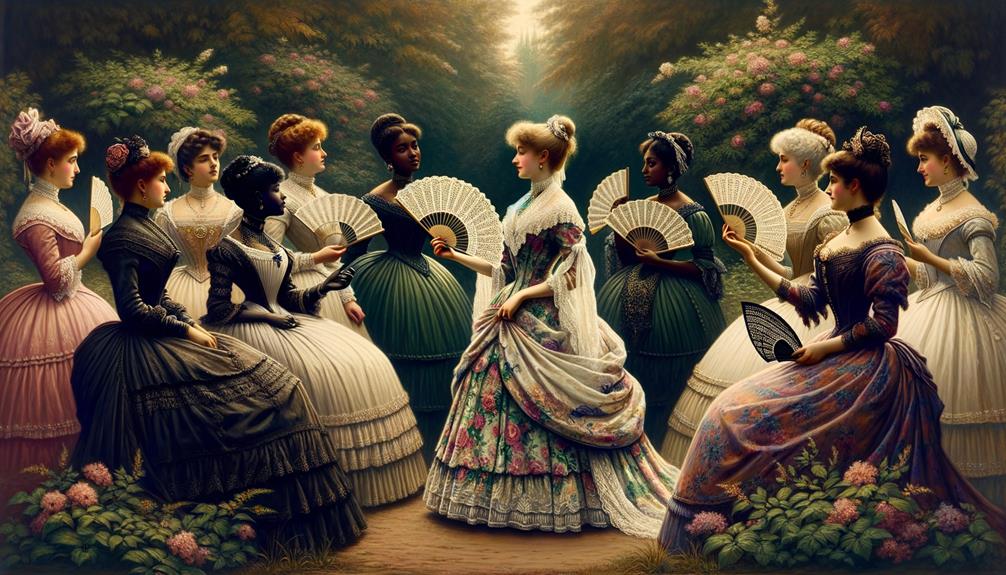I've always been fascinated by the timeless elegance of the Victorian chignon. This hairstyle is more than just a fashion statement; it's a subtle expression of refinement. In the Victorian era, women adorned their chignons with ribbons, flowers, or combs, transforming them into symbols of social status. The intricate braiding and twisting, often paired with delicate accessories, showcased an artful sophistication. From the Apollo chignon to the Coiffure a la Chinoise, each variation had its own unique charm. Even today, modern interpretations of this style continue to inspire designers and bridal magazines alike. The Victorian chignon's enduring allure and craftsmanship are undeniable.
History of the Chignon
The chignon, a hairstyle that twists or rolls hair into a knot at the nape, emerged in the Victorian era as a symbol of elegance and social status. I find it fascinating how a simple yet sophisticated hairstyle could encapsulate the values of an entire era. During this time, women wore chignons to formal occasions, adorning them with ribbons, flowers, or combs, transforming their hair into a canvas of sophistication.
Maintaining these chignons required time and effort, but it wasn't just about appearance; it was a statement. A well-crafted chignon spoke volumes about a woman's social standing and her attention to the subtleties of fashion. Hair became a silent language of refinement and sophistication.
Reflecting on this, I see how the chignon was more than a hairstyle; it was an emblem of the conservative fashion ethos that ruled the Victorian era. The way women styled their hair for formal occasions revealed their dedication to societal norms and personal elegance.
In those days, every twist and roll of the hair was a deliberate act, a meticulous process that Victorian women embraced as part of their daily lives. The chignon's legacy of sophistication still resonates today.
Popular Variations
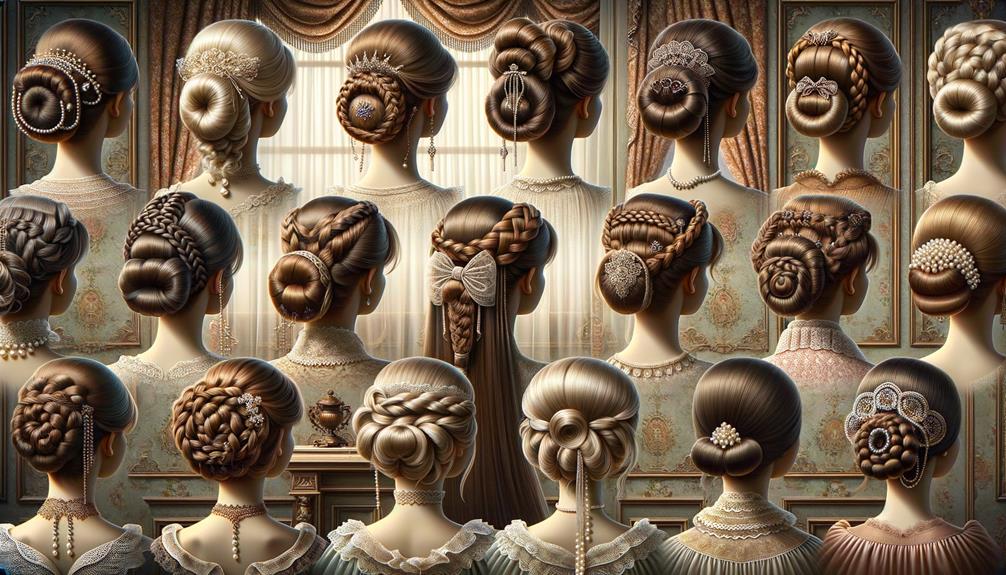
Chignons evolved into countless variations, each with its unique charm. I find it fascinating how these styles continue to inspire. The Apollo chignon, with its distinctive twists, embodied early 19th-century elegance. It wasn't just about natural hair; false hair pieces were often added for volume and drama.
The Coiffure a la Chinoise caught my eye with its large loops atop the head. This style could start conversations at any gathering. In contrast, the Victorian Gothic era saw chignons evolve into downward-turning hairstyles, featuring spaniel loops and long twists under the ears. Each style, whether in a bun or braid, offered a distinct personality.
As I observed the transition from the 1840s to the 1860s, loosely curled hair gave way to tightly twisted chignons. This shift reflected broader trends of restraint and refinement. Cupid's arrow hair pieces often adorned these styles, adding a playful touch. Regardless of the era, the center part remained a staple, grounding the elaborate designs. Each variation of the chignon continues to fascinate, bridging the past with the present in a seamless loop.
Styling Techniques
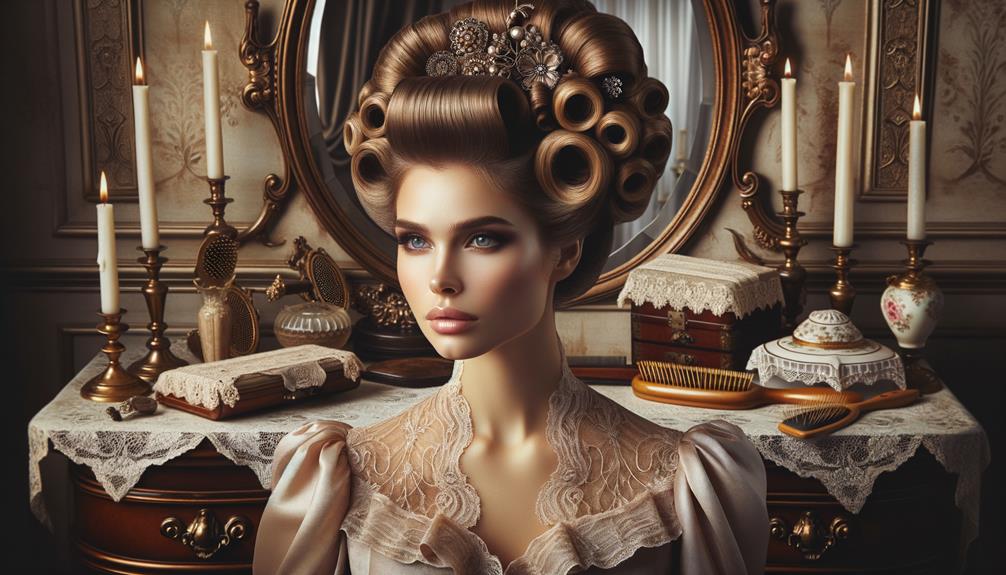
I can't help but admire the meticulous artistry involved in crafting a Victorian chignon. The process requires patience, precision, and attention to detail. Twisting and pinning hair into a neat knot at the nape of the neck feels almost ceremonial, each step deliberate and meaningful.
Incorporating braiding techniques adds an extra layer of complexity, introducing texture and volume to the chignon. The interplay of twists and braids elevates the hairstyle into a statement of sophistication. Hair products like hairspray and styling gel become crucial, ensuring that each strand remains in place, contributing to the overall structure and longevity of the chignon.
Regular upkeep is vital. A Victorian chignon isn't just about the initial styling; it's about maintaining its polished look throughout the day. This means occasional touch-ups to smooth out any stray hairs and preserve its refined appearance.
Styling tools play a vital role. Combs and brushes lay the foundation, while curling tongs add subtle waves, enhancing the chignon's visual appeal. Hairpins anchor the twists and braids, securing the intricate design in place. Each tool serves a purpose, contributing to the timeless elegance of the Victorian chignon.
Tools and Accessories
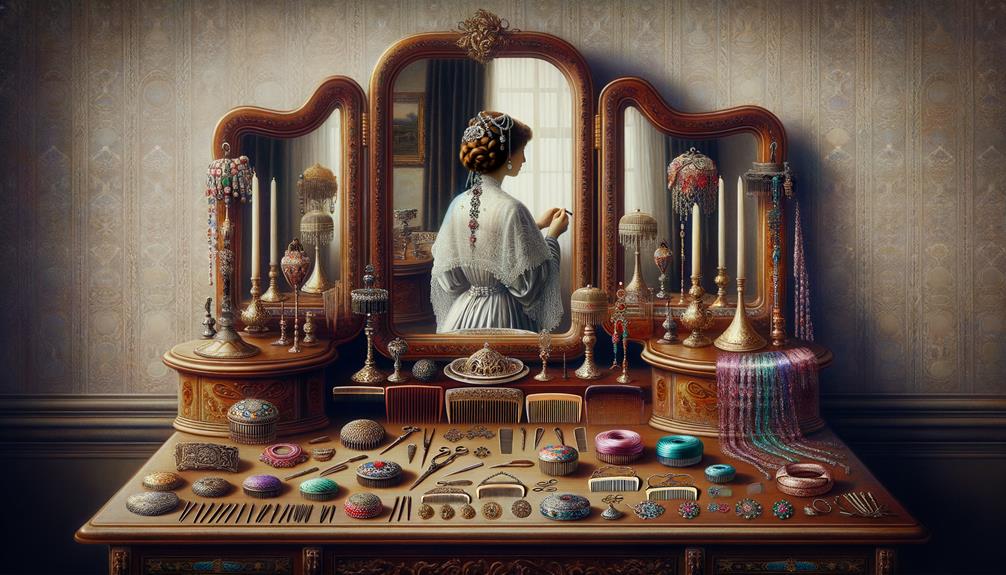
Exploring the tools and accessories of the Victorian era reveals the ingenuity behind the elegant chignon. Simple items became essential in crafting these intricate hairstyles. Hairpins, combs, and hairnets were the foundation, holding everything in place with quiet efficiency. Even the humble hairpin was a work of art, meticulously placed to secure the elaborate chignons.
Accessories played a starring role, adding a personalized touch to the hairstyles. Ribbons, flowers, and jeweled combs transformed a simple chignon into a statement piece. The use of padding, bun bumps, and hairpieces was common, creating the illusion of volume and fullness. Hair rats, cushion-like structures, provided height and stability.
Curling irons and rollers shaped the hair, adding waves and curls that softened the overall look. Brushes, essential for smoothing and shaping, were wielded with precision. Each tool and accessory was a piece of the puzzle, contributing to the final, harmonious whole.
Ultimately, these Victorian tools and accessories were not just functional; they were transformative. They allowed women to express elegance and individuality, crafting chignons that were both timeless and innovative.
Modern Interpretations
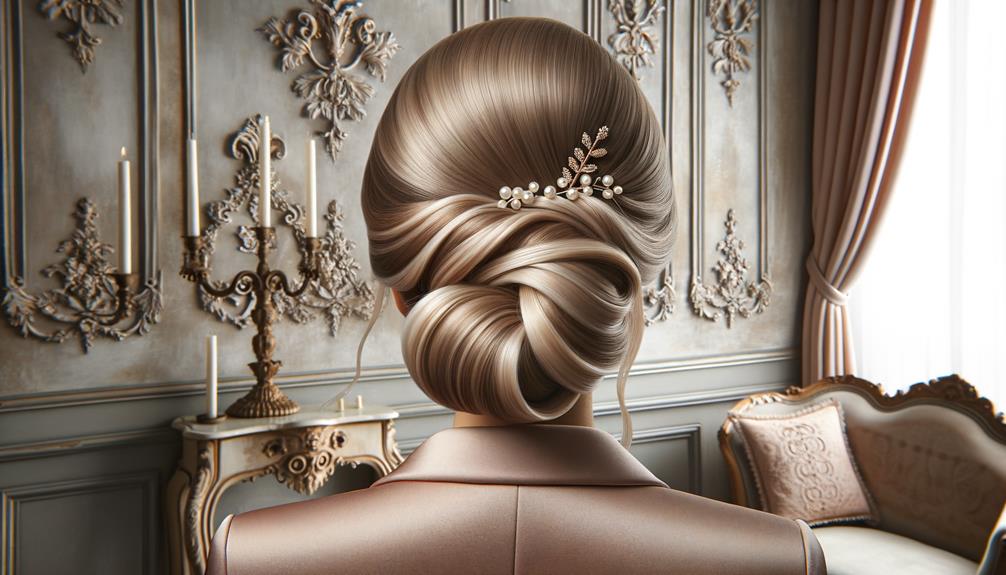
Modern Interpretations
While Victorian tools and accessories once shaped the chignon, today's stylists blend tradition with modern flair to create a fresh look. I've noticed the Victorian chignon gracing fashion runways and red carpet events, where contemporary hairstylists put their own spin on this classic updo design. The way the past and present come together in these elegant transformations is truly fascinating.
Bridal magazines feature modern variations of the Victorian chignon, customized for today's sophisticated wedding hairstyles. These contemporary interpretations maintain the timeless elegance of the original while offering fresh, creative twists. The chignon's adaptability is its greatest strength, allowing it to evolve while staying true to its roots.
Beauty influencers play a significant role in keeping this vintage-inspired hairstyle relevant. Their tutorials make the process accessible, allowing beauty enthusiasts to recreate the Victorian chignon with a modern twist. Watching these influencers, I'm struck by the chignon's enduring appeal, inspiring both hairstylists and individuals alike.
The chignon's journey from Victorian salons to modern salons and social media feeds highlights its lasting charm. This blend of tradition and innovation offers endless possibilities for those who appreciate both history and modernity.
Frequently Asked Questions
What Hairstyles Did Victorians Wear?
Victorians flaunted diverse hairstyles, from elegant ringlets and intricate braids to sophisticated buns and elaborate updos. They often adorned their hair with accessories like ribbons and jeweled pins, which reflected their social standing and the influence of Queen Victoria, art, and global events on their fashion trends.
What Is the History of the Chignon Hairstyle?
The chignon hairstyle has a rich history that dates back to the Victorian era, specifically gaining popularity in the 1860s among French and English women. This elegant style reflects the sophistication and femininity of the time, with intricate designs that exude refinement.
What's the Difference Between a Bun and a Chignon?
I see buns as simple, everyday hairstyles, while chignons are intricate, elegant styles perfect for special occasions. Buns are perfect for daily life, while chignons shine at weddings, formal galas, and other high-end events. The complexity and sophistication of a chignon truly set it apart from a simple bun.
How to Do a Classic Chignon?
Creating a classic chignon is an exercise in refinement. I gather my hair, twisting it into a coiled bun, and secure it with bobby pins. Each step transforms simplicity into sophistication, finishing with a light hold of hairspray for a polished, effortless look.



